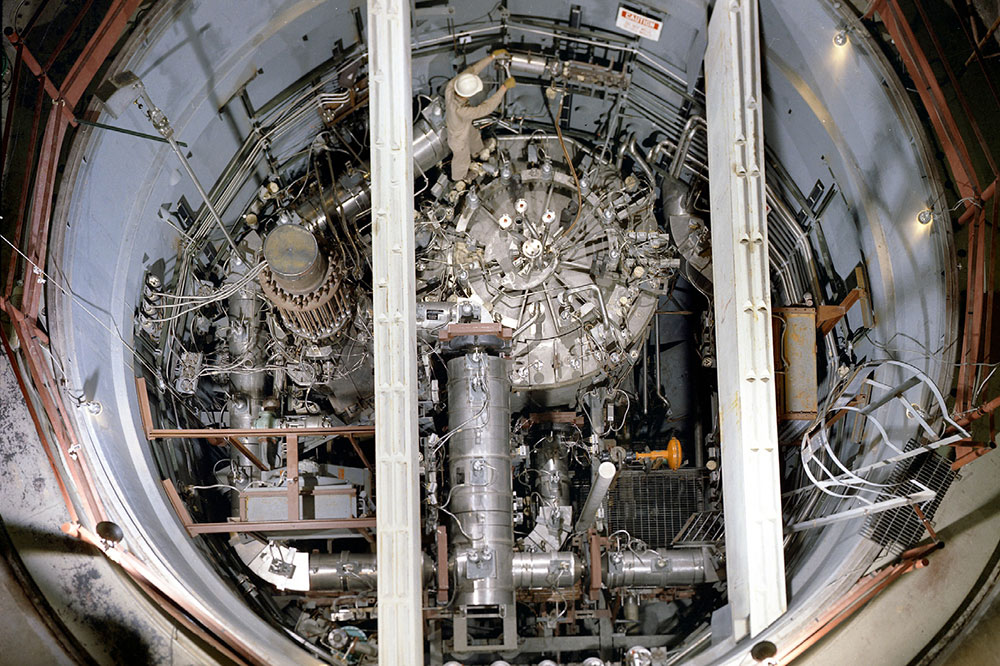
An ORNL photo showing the inner workings of a molten salt reactor.
Highlights
- Molten salt reactors (MSRs) offer safety and cost-competitive advantages to other reactor designs.
- Open-source framework can help make new nuclear reactor design concepts more widely appreciated.
- Chvala has a plant-level open-source dynamic model, which can provide system feedback behavior.
Molten Salt Reactors (MSRs) have not been studied as extensively as other reactor design concepts and are much different than regular solid-fuel reactors.
But in the quest to develop nuclear energy to meet the global demand and mitigate climate change, MSRs offer a generational leap in safety for nuclear power production with promises of being economically competitive and have thus seen resurgence in interest over the last decade.
NE Research Assistant Professor Ondrej Chvala is one researcher who has sought to find ways to make MSRs more competitive with other reactor designs so they can be deployed at scale.
Chvala and his team present research in collaboration with Oak Ridge National Laboratory that uses an open-source framework, which is part of the effort to make new nuclear reactor design concepts more widely appreciated. He says they openly offer their model for MSR vendors, researchers, and other interested parties for investigating how an operating MSR power plant would behave.
The research applies to a plant-level dynamic model of a generic MSR design.

Ondrej Chvala
“The study captures the underlying physics of MSR systems while having computational requirements that can be satisfied by a personal computer,” says Chvala. “Hours of transient behavior of the plant can be simulated in minutes on a laptop.”
Dynamic modeling helps narrow design parameters, inform reactor design choices, probe operational safety limits, and develop effective reactor control strategies. This is especially important for MSRs, which are liquid-fueled, high-temperature, low-pressure reactors that are often outside the typical nuclear engineer’s experience base.
Their research, which was published in Nuclear Engineering and Design, provides insight on MSR system feedback behavior, response to variations in system parameters, and the effects of events that can lead to hazardous consequences. The model shows that the dynamic behavior of well designed MSRs exhibit no issues, but other challenges concerning instrumentation remain.
The economics pertinent to the nuclear power industry suggests that future nuclear plants should ideally be capable of rapid load-following, which means it is capable of adjusting power output as demand for electricity fluctuates throughout the day without inducing undue physical stresses on the plant.
Chvala says this research shows that MSRs hold unparalleled potential to operate autonomously in load-following mode given appropriate measurements are made.